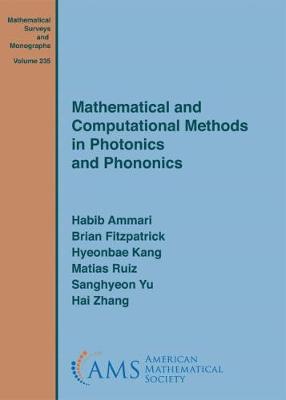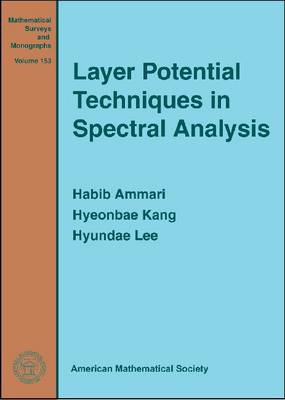Mathematical Surveys and Monographs
2 total works
Mathematical and Computational Methods in Photonics and Phononics
by Habib Ammari, Brian Fitzpatrick, Hyeonbae Kang, Matias Ruiz, and Sanghyeon Yu
Published 1 September 2019
The fields of photonics and phononics encompass the fundamental science of light and sound propagation and interactions in complex structures, as well as its technological applications. This book reviews new and fundamental mathematical tools, computational approaches, and inversion and optimal design methods to address challenging problems in photonics and phononics.
An emphasis is placed on analyzing sub-wavelength resonators, super-focusing and super-resolution of electromagnetic and acoustic waves, photonic and phononic crystals, electromagnetic cloaking, and electromagnetic and elastic metamaterials and metasurfaces. Throughout this book, the authors demonstrate the power of layer potential techniques for solving challenging problems in photonics and phononics when they are combined with asymptotic analysis. This book might be of interest to researchers and graduate students working in the fields of applied and computational mathematics, partial differential equations, electromagnetic theory, elasticity, integral equations, and inverse and optimal design problems in photonics and phononics.
An emphasis is placed on analyzing sub-wavelength resonators, super-focusing and super-resolution of electromagnetic and acoustic waves, photonic and phononic crystals, electromagnetic cloaking, and electromagnetic and elastic metamaterials and metasurfaces. Throughout this book, the authors demonstrate the power of layer potential techniques for solving challenging problems in photonics and phononics when they are combined with asymptotic analysis. This book might be of interest to researchers and graduate students working in the fields of applied and computational mathematics, partial differential equations, electromagnetic theory, elasticity, integral equations, and inverse and optimal design problems in photonics and phononics.
Layer Potential Techniques in Spectral Analysis
by Habib Ammari, Hyeonbae Kang, and Hyundae Lee
Published 1 May 2009
Since the early part of the twentieth century, the use of integral equations has developed into a range of tools for the study of partial differential equations. This includes the use of single- and double-layer potentials to treat classical boundary value problems. The aim of this book is to give a self-contained presentation of an asymptotic theory for eigenvalue problems using layer potential techniques with applications in the fields of inverse problems, band gap structures, and optimal design, in particular the optimal design of photonic and phononic crystals. Throughout this book, it is shown how powerful the layer potentials techniques are for solving not only boundary value problems but also eigenvalue problems if they are combined with the elegant theory of Gohberg and Sigal on meromorphic operator-valued functions. The general approach in this book is developed in detail for eigenvalue problems for the Laplacian and the Lame system in the following two situations: one under variation of domains or boundary conditions and the other due to the presence of inclusions. The book will be of interest to researchers and graduate students working in the fields of partial differential equations, integral equations, and inverse problems. Researchers in engineering and physics may also find this book helpful.

